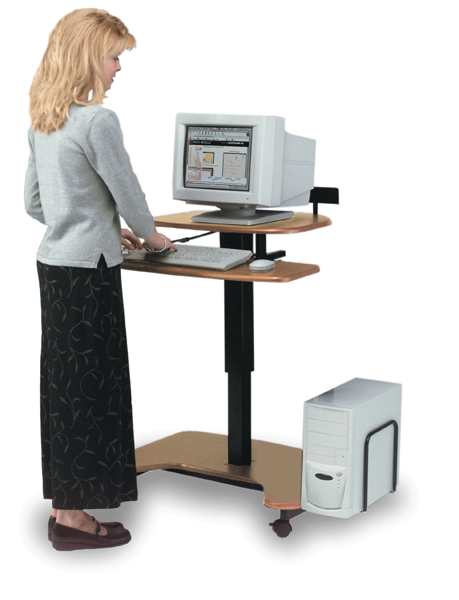In finishing up our series on the lower back, here is a case study to help illuminate lower back pain, its possible causes and what one woman has done to address it.
Maria, age 65, was diagnosed with Spinal Stenosis approximately 10 years ago and the condition has gradually worsened with age. While stenosis might seem  like a scary word, it is really just another term for arthritis of the spine. It is caused by a build up of calcium in the spinal canal. (Just like arthritis of the thumb is caused by a build-up of calcium in the basil joint) The spine can handle a lot of narrowing in the canal, but it is compression added to this narrowing, which is really at the root of the problem. In Maria’s case, the compression on her spine is a result of many years spent working a stationary, seated job, with improper alignment.
like a scary word, it is really just another term for arthritis of the spine. It is caused by a build up of calcium in the spinal canal. (Just like arthritis of the thumb is caused by a build-up of calcium in the basil joint) The spine can handle a lot of narrowing in the canal, but it is compression added to this narrowing, which is really at the root of the problem. In Maria’s case, the compression on her spine is a result of many years spent working a stationary, seated job, with improper alignment.
You see, any time you move two bones closer together they start to calcify. Joints have a certain space they need to be happy and healthy, and when that space gets decreased calcification begins to develop in between. In the case of the spine, it is a byproduct of the spacing between the lumbar vertebrae and the disc. With spinal stenosis you always have a compressed disc. Always.
For each joint there is a position that is optimal and it’s optimal for a multitude of things. It’s optimal for the nerve, for the joint fluid, and for the fiber direction of the muscle. When that position gets out of alignment, compression develops. When the spine gets compromised it is very similar to the thumb, as detailed in an earlier blog. As soon as there is compression, the micro-circulation is impeded and it is much easier for the calcification to take hold. And once calcium begins to grow it’s like growing rock crystals.
To sum it up, most cases of stenosis are caused by improper alignment over a long period of time, and that is the case with Maria. (A very small percentage of stenosis is genetic.) The amount of sitting she has been doing is a huge contributor. It is nearly impossible to sit with perfect alignment all the time, especially if you are sitting for 6-8 hours a day for years running.
 Once calcification takes hold in the spine, it is permanent. So what’s a person to do? That’s where our work at Dorfman Kinesiology is vital for reducing the compression on the affected joint because without compression there is no problem.
Once calcification takes hold in the spine, it is permanent. So what’s a person to do? That’s where our work at Dorfman Kinesiology is vital for reducing the compression on the affected joint because without compression there is no problem.
For Maria, a vital component of treatment included a reduction in the amount of sitting she was doing each day, along with improvements in her seated posture. Maria arranged for a standing desk to be used at the office, in alternation with her seated one. This simple change in her office ergonomics made a huge difference in her well-being and significantly reduced compression in her back.
Along with changes in the office, Maria learned stretches that she does on a regularly basis to elongate the spine, thus relieving compression and pain. These stretches also promote correct seated and standing alignment while helping the back maintain flexibility and range of motion.
Weekly massage with Dorfman Kinesiology therapists provides the third essential component of care for Maria’s spinal stenosis. During her regular appointments, we not only do hands-on bodywork but confer closely with Maria about any improvements or set-backs in her condition and strive to determine causality. According to Maria, “Brian and his team are efficient in asking what has and hasn’t worked with stretching, etc. They are very investigative about what triggered pain that week, what activities I did or didn’t do.”
Most importantly, Maria sees her relationship with our therapists as a partnership in which both hold responsibility for achieving treatment goals. Dorfman Kinesiology has worked to educate Maria on her role in maintaining and improving her situation. Along with keeping correct posture, stretching on a regular basis and receiving weekly massage, Maria also understands the need to be careful in her recreational activities and to respect the range of her movement and flexibility.
So, although spinal stenosis is considered an incurable, degenerative disease, together we have been able to significantly reduce Maria’s degree of pain and immobility, while enhancing her quality of life. Maria has been an active participant in her treatment and the results are conclusive. One of the problems with today’s medical system is that the patient is often considered a passive recipient of care. With this case, however, we see the benefits of a true partnership between a practitioner and patient working toward a common goal.
If you have lower back pain or have received a diagnosis of spinal stenosis and are unsure how to proceed, schedule an appointment with us to learn first hand how these techniques can make a difference. Your lower back will Feel Better Forever in partnership with Dorfman Kinesiology today.
